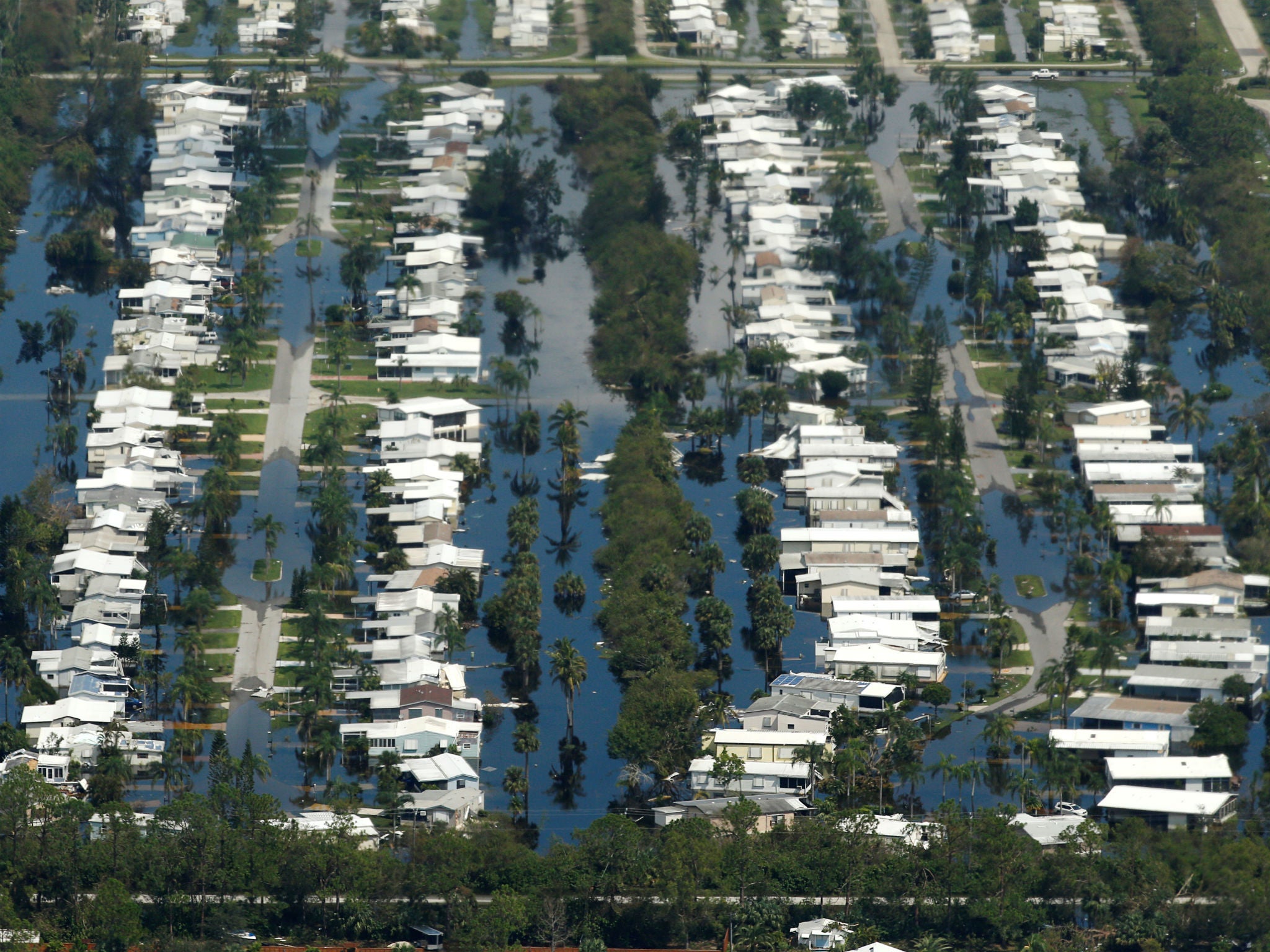Rising seas could flood 300,000 US homes and make coastal communities ‘unviable’
Some 550,000 Americans live in properties at risk of being abandoned as floods drive down property values

Your support helps us to tell the story
From reproductive rights to climate change to Big Tech, The Independent is on the ground when the story is developing. Whether it's investigating the financials of Elon Musk's pro-Trump PAC or producing our latest documentary, 'The A Word', which shines a light on the American women fighting for reproductive rights, we know how important it is to parse out the facts from the messaging.
At such a critical moment in US history, we need reporters on the ground. Your donation allows us to keep sending journalists to speak to both sides of the story.
The Independent is trusted by Americans across the entire political spectrum. And unlike many other quality news outlets, we choose not to lock Americans out of our reporting and analysis with paywalls. We believe quality journalism should be available to everyone, paid for by those who can afford it.
Your support makes all the difference.Hundreds of thousands of homes in the United States could face persistent flooding as climate change pushes sea levels higher, according to a new report.
Sea level rise is expected to be one of the most tangible effects of a changing climate, as accumulating greenhouse gases fuel a steady rise in global temperatures that in turn raise the level of oceans - threatening low-lying and coastal areas.
A new report from the Union of Concerned Scientists quantified the risk by comparing areas already known to be at high flood risk against data from the real estate website Zillow.
The result: more than 300,000 homes lining America’s lengthy coastlines could face chronic flooding by 2045, which would mean 30-year mortgages issued to home-buyers today could be placing them in at-risk properties. Those structures house some 550,000 people.
Even before homes are entirely submerged, the report found, plummeting property values could lead homeowners to abandon properties and potentially entire neighbourhoods that have become effectively uninhabitable, “with potential reverberations throughout the national economy”.
“With the inevitability of ever-higher seas, these are not devaluations from which damaged real estate markets will recover”, the report warned.
But the report’s authors warn that many real estate markets do not take into account the looming cataclysm, leading more people to purchase property that could face regularly flooding.
In addition to the homes at risk of inundation, the report found that some 14,000 commercial properties with a collective value of $18.5 billion lie in the danger zone.
Extending the analysis to 2100, the likely consequences become even more dire: some 4.7 million people could live in homes that are vulnerable to rising waters, with Florida, New York and New Jersey holding the greatest numbers.
Officials must respond with policies that seek to limit greenhouse gas emissions and help coastal communities prepare for increased flooding, the report urges.
“At the local level, coastal communities must no longer allow construction that cannot accommodate sea level rise”, South Miami mayor Philip Stoddard told the report’s authors.
But Michael Berman, an expert on housing and flood risk who has advised the federal government on housing policy, warned that policymakers have been slow to recognise the threat.
“Short-term thinking and a simple view of the world tends to prevail in our culture, including our business and political cultures,” Mr Berman said. “There is almost nothing being done by policymakers in many vulnerable parts of the United States in the flood risk arena.”
Join our commenting forum
Join thought-provoking conversations, follow other Independent readers and see their replies
Comments